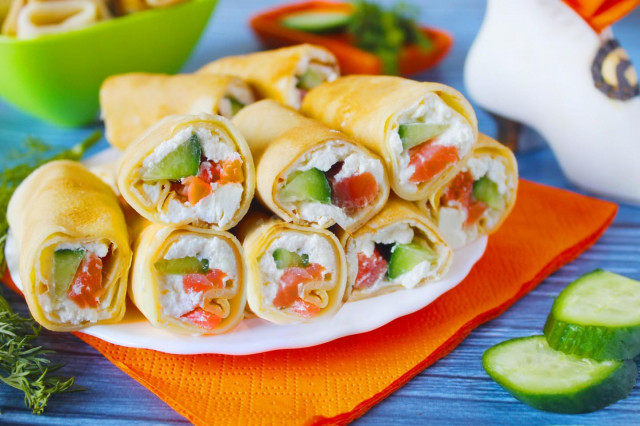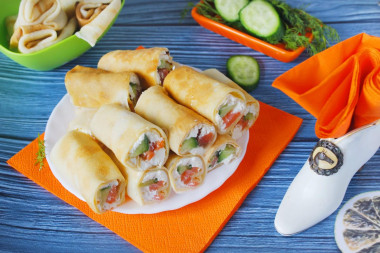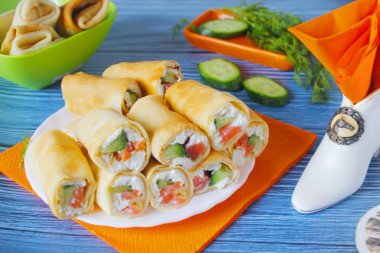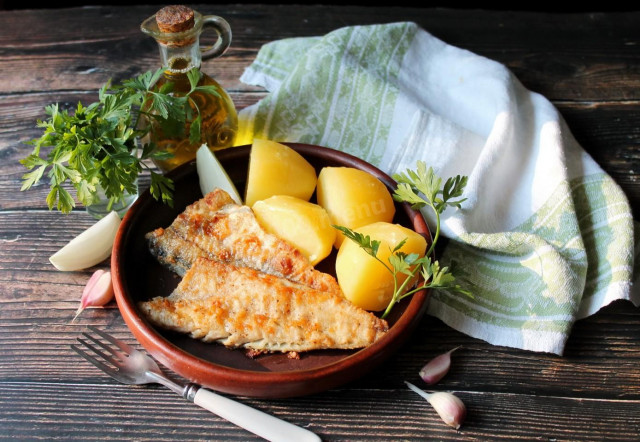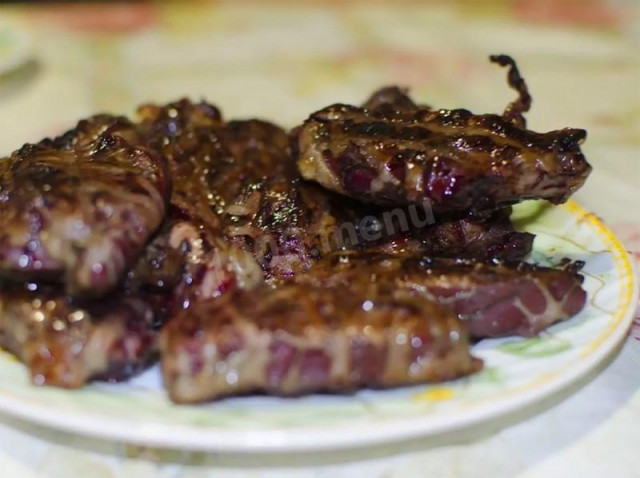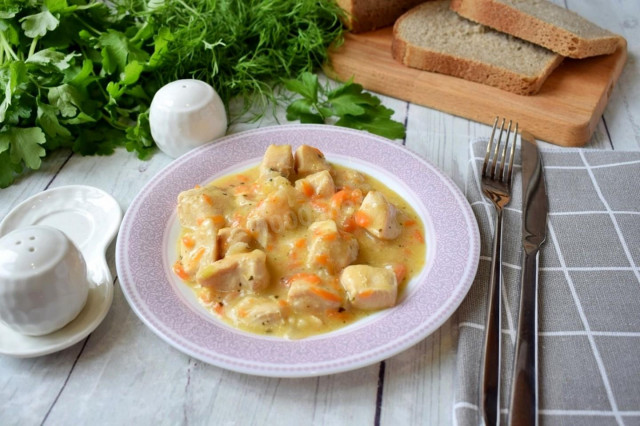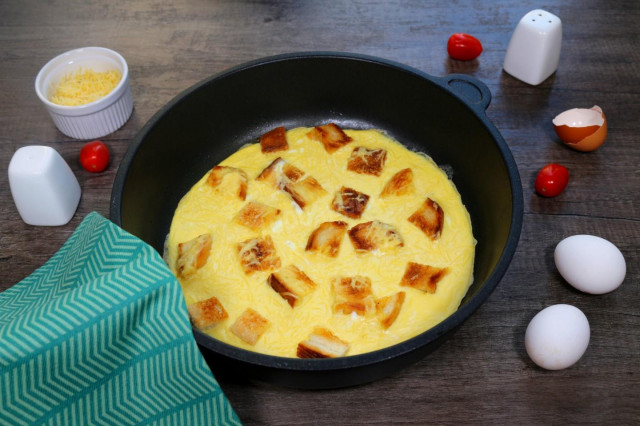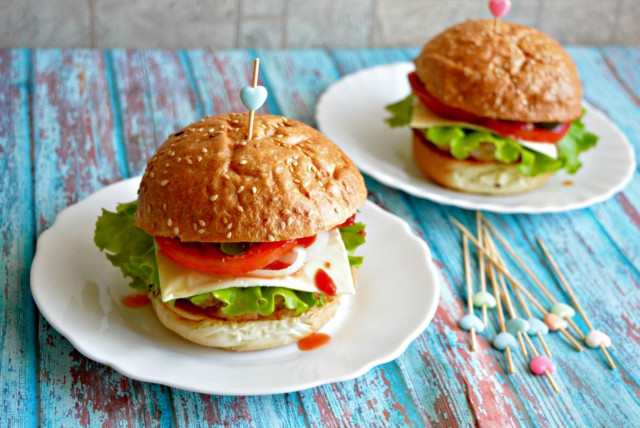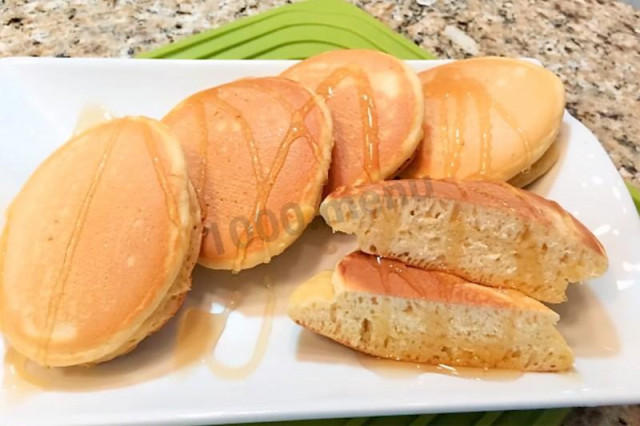Composition / ingredients
Step-by-step cooking
Step 1:
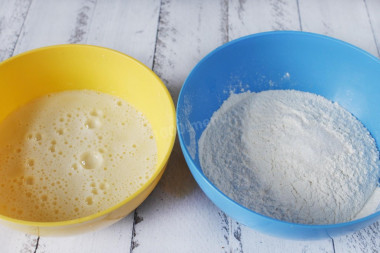
How to make pancakes with salmon and cheese? We make pancake batter. We take two deep bowls: in one we mix all the dry ingredients: sifted flour, salt and sugar. In another bowl, beat the eggs and pour in the milk. Milk and eggs should be taken out of the refrigerator in advance - they should be at room temperature. Milk can also be warmed up slightly. If the milk is very fatty, then it needs to be diluted with warm water, otherwise the pancakes will stick.
Step 2:
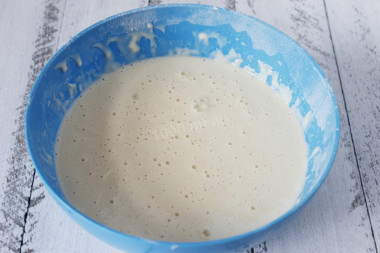
Next, pour the liquid mixture into the flour mixture in small portions and shake well with a whisk or mixer. Pour in vegetable oil, mix. You can additionally strain the dough through a strainer so that it becomes more homogeneous and does not contain lumps.
Step 3:
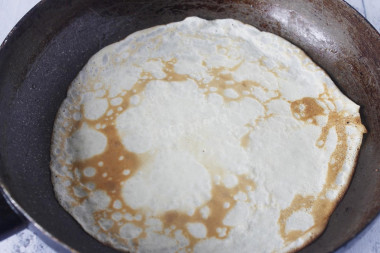
Preheat the frying pan on the fire, lightly lubricate with vegetable oil - only for the first time! Pour a small amount of dough into the pan with a ladle and form a pancake. Fry on one side for 30 seconds, on the other for 15 seconds on medium heat. We do this with the whole test. We will need 8 pancakes, but we will get a little more.
Step 4:
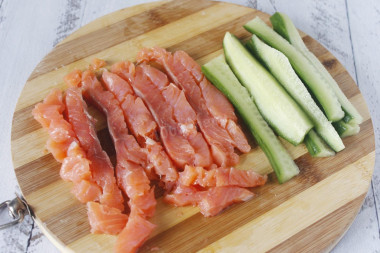
When the pancakes are ready, let's do the filling. Carefully cut the skin from a piece of salmon and cut the fish fillet into long strips - you should get 8 pieces. We will wash the cucumber and cut it into thin cubes (also 8 pieces), suitable in length for fish blanks.
Step 5:
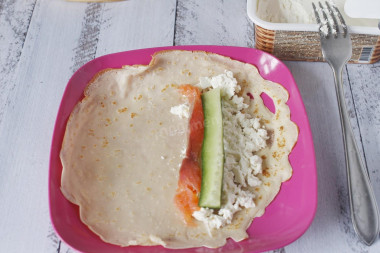
Take one pancake, spread it half with cream cheese, spread cucumber and fish. Cheese can be spread with a fork, a spoon soaked in water, or just with your hands. The main thing is to get it out of the refrigerator in advance so that it melts a little and becomes more pliable. The upper edges can not be smeared - they will still remain empty and we will cut them off.
Step 6:
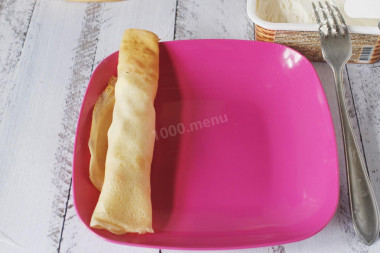
Roll up the pancake roll, trying to make it tighter. For ready-made pancakes, we cut off the empty edges and cut the rolls into two or even three equal parts. So we serve it to the table!
Pancakes with salmon and cream cheese are a snack for the holiday.
Be prepared for the fact that flour may need more or less than indicated in the recipe. Focus not on the amount of flour, but on the desired consistency of the dough. To avoid mistakes, read about flour and its properties!
All the features of different types of cream cheeses and how to properly replace such cheese in the recipe so as not to spoil the dish, read in this article.
Important! An incorrectly selected frying pan can ruin even the best recipe. All the details on how to choose the perfect frying pan for different dishes read here .
Caloric content of the products possible in the composition of the dish
- Fresh cucumbers - 15 kcal/100g
- Whole cow's milk - 68 kcal/100g
- Milk 3.5% fat content - 64 kcal/100g
- Milk 3.2% fat content - 60 kcal/100g
- Milk 1.5% fat content - 47 kcal/100g
- Concentrated milk 7.5% fat content - 140 kcal/100g
- Milk 2.5% fat content - 54 kcal/100g
- Chicken egg - 157 kcal/100g
- Egg white - 45 kcal/100g
- Egg powder - 542 kcal/100g
- Egg yolk - 352 kcal/100g
- Ostrich egg - 118 kcal/100g
- Steamed salmon - 197 kcal/100g
- Boiled salmon - 189 kcal/100g
- Fresh salmon - 140 kcal/100g
- Whole durum wheat flour fortified - 333 kcal/100g
- Whole durum wheat flour, universal - 364 kcal/100g
- Flour krupchatka - 348 kcal/100g
- Flour - 325 kcal/100g
- Granulated sugar - 398 kcal/100g
- Sugar - 398 kcal/100g
- Vegetable oil - 873 kcal/100g
- Salt - 0 kcal/100g
- Cream cheese with 50% fat content - 349 kcal/100g

